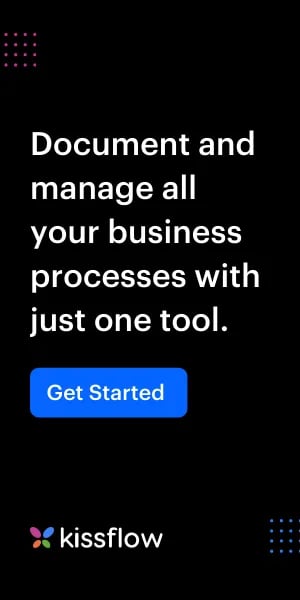You are Here: Process Software >> Process Documentation Steps
Using well-written business process documentation makes it possible for you to scale quickly in the future. At the same time, if your business processes are documented accurately, your team members will know exactly how to deliver services to internal and external customers.
If you have been wondering how to start designing and documenting a business process but have no idea where to start, we’ve put together a 10-step checklist.
What is Business Process Documentation?
Business process documentation is a complete description of a business process using words, images, and symbols to designate exactly how the process should function in an ideal environment. The documentation should include what data is required to complete the process, what the workflow is, and any decisions that need to be made.
To be useful and effective, business processes need to be carefully designed, structured and documented. By capturing as much detail about the business process as possible, you can achieve the desired results.
While you may assume that process documentation is just a bureaucratic and unproductive aspect, it’s actually incredibly useful in ensuring the success of a business process.
You can refer to this document for process improvement as it will be able to provide you with a consensual and reliable basis to understand the necessary improvements that need to be done to optimize the overall performance.
Steps to Create a successful Business Process Documentation
Step 1: Process name
To get the ball rolling, decide on the process name and jot down its description along with the main goal.
Step 2: Process boundaries
Identify the starting and ending points of the business process. You have to know what triggers the process and how it gets finished before you can start adding the other smaller details.
Step 3: Process outputs
You should decide on the process outputs or the final result that you will get when the process is finished.
Step 4: Process inputs
Select the data that is needed for the process to execute. You should also define where the input data comes from.
Step 5: Process activities
List out all the activities or steps that need to be performed to take the process from the start to the finish point.
Step 6: Process organization
Take all the activities you listed out in the step above and sequence them according to the business process flow. It’s important to identify all the key decision points in your process at this stage.
Step 7: Process review
Verify the sequence of activities that you created in the last step to make sure it aligns with the process boundaries you created in the second step.
Step 8: Process roles
With the entire process mapped out, you now need to select the different roles (or team members) who will be completing the different activities in the process.
Step 9: Create a flowchart
With everything planned out, create a clear flowchart of the process to make it easily understandable for everyone involved.
Step 10: Final Review
The final step is to discuss the process flow with all the stakeholders involved and get the necessary approvals to set the process in motion.
Putting together documentation for a business process helps you see how it all comes together when the process is executed in an organization.
For instance, here is how the payroll process would be documented
- Process name: Payroll
- Process boundaries: Employees get paid for monthly work through automatic bank transfer
- Process outputs: Paychecks and monthly payroll reports
- Process inputs: Employee time cards, leave records, and bank account details
- Process activities: Verifying employee time cards, checking for leave applications, adding bank account details, transferring monthly salary to respective accounts, and generating payroll reports
- Process roles: Employee, manager, and the HR department
How Kissflow can help document your process
Kissflow is a business process management tool that can turn workflows into automated tasks and it can help you in creating an automated business process documentation.
Instead of mapping business processes in a standalone documentation tool, you can document, design, automate, and manage processes directly in Kissflow.
Get started with Kissflow Process today and see how you can put your documented processes into action!
